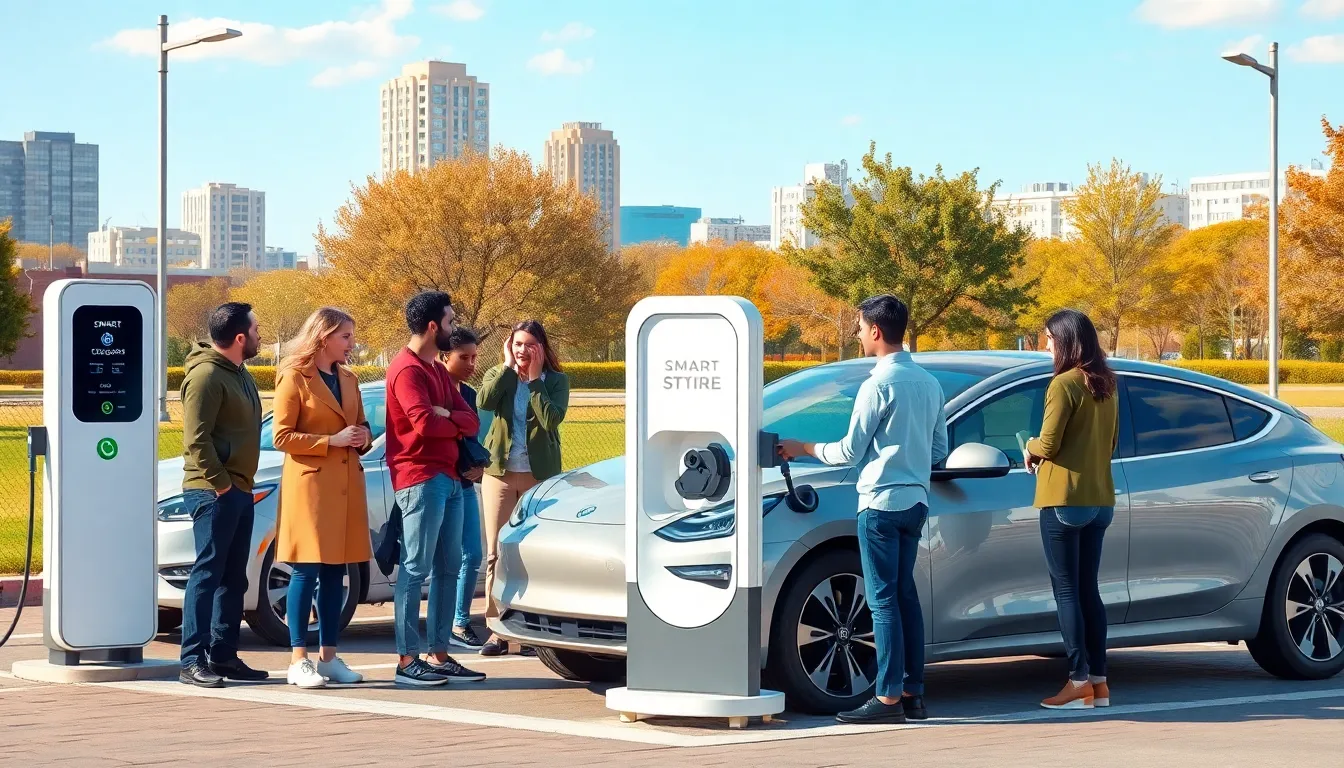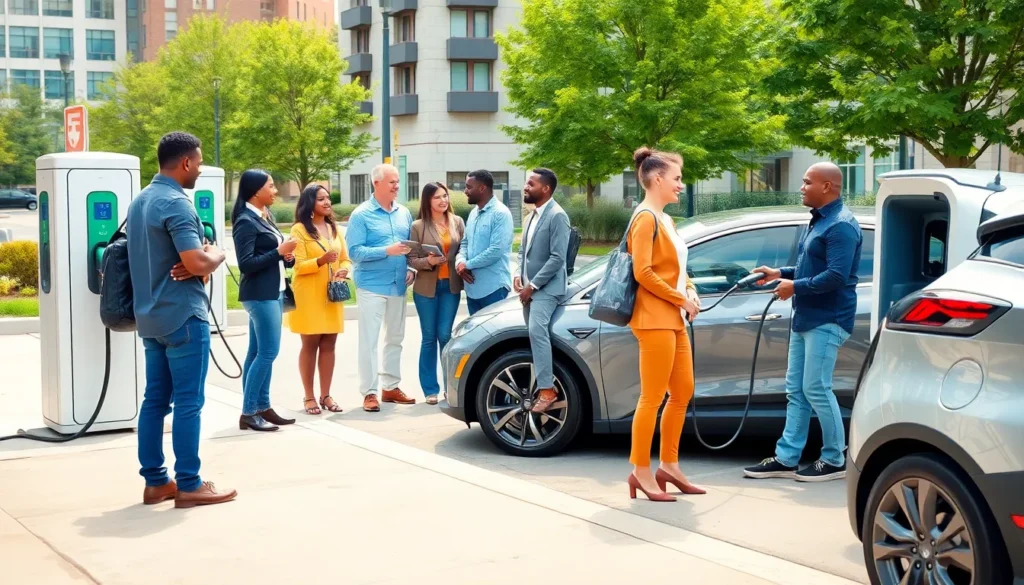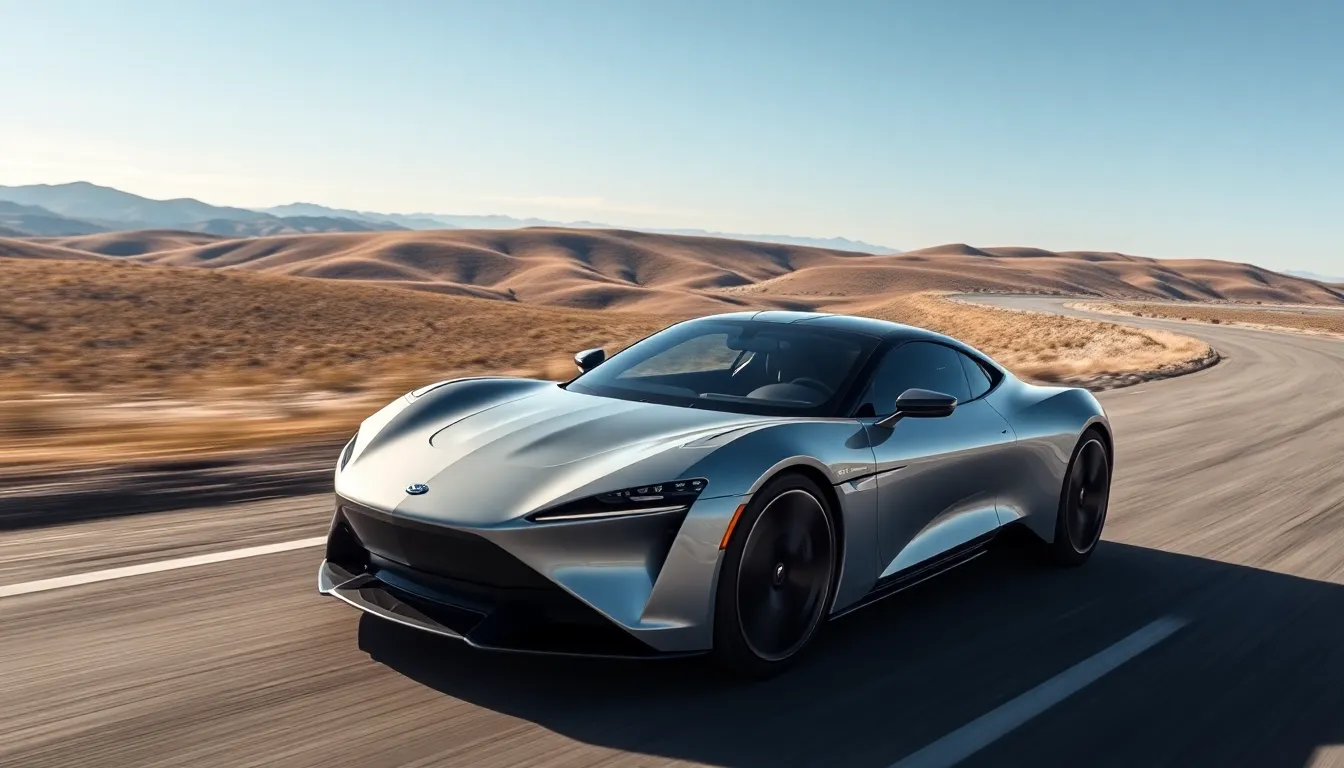As the world shifts gears toward a greener future, electric vehicles (EVs) are zooming into the spotlight. Imagine a world where your car not only gets you from point A to point B but also helps save the planet—all while you sip your morning coffee. Sounds like a dream, right? Well, it’s becoming a reality faster than you can say “zero emissions.”
But it’s not just about the cars themselves; it’s about how they integrate into our lives and communities. From smart charging stations to renewable energy sources, the integration of EVs is like a high-tech dance party where everyone’s invited. Buckle up as we dive into the electrifying world of EV integration and discover how it’s transforming our roads, our homes, and maybe even our social lives.
Table of Contents
ToggleOverview of Electric Vehicle Integration
Electric vehicle integration involves embedding EVs into the fabric of daily life. This process enhances transportation systems while promoting sustainability. By incorporating smart charging stations, cities enhance the convenience of using electric vehicles. Charging infrastructure supports the growing demand for EVs, ensuring drivers find available charging options easily.
Communities benefit from integrating renewable energy sources into charging systems. Wind and solar energy can power EVs, reducing reliance on fossil fuels. Collaboration between utility companies and charging network providers enables this transition. Electric vehicles contribute to energy resilience, providing power during peak demand hours through vehicle-to-grid technology.
Infrastructure adaptation remains critical in achieving effective EV integration. Upgraded power grids need monitoring and management to accommodate increased electricity demand. Local governments play a crucial role by prioritizing policies that encourage EV adoption. Incentives such as tax credits and rebates can stimulate consumer interest in electric vehicles.
Consumer education improves awareness of available options and benefits. Workshops and informational sessions can demystify EV technologies, leading to better-informed decisions. Stakeholders, including manufacturers and local businesses, create ecosystems that foster growth for electric vehicle adoption.
Integration promotes not just transportation transformation, but also societal shifts. Communities begin to witness reduced emissions and improved air quality as EV usage increases. Behavioral changes, such as prioritizing public transport and cycling, often accompany this shift. As electric vehicles become mainstream, their positive impact on the environment becomes more apparent. Integrating EVs within urban planning ultimately drives a more sustainable future.
Benefits of Electric Vehicle Integration

The integration of electric vehicles (EVs) offers numerous benefits across various sectors. From environmental sustainability to economic growth, these advantages support the movement toward a greener future.
Environmental Impact
Electric vehicles significantly reduce greenhouse gas emissions, demonstrating their potential to combat climate change. They produce zero tailpipe emissions, leading to improved air quality in urban areas. Furthermore, when combined with renewable energy, the carbon footprint decreases even more. EVs also contribute to decreased noise pollution, enhancing overall quality of life. Smart charging stations balance grid demand, minimizing energy waste and optimizing renewable resource utilization. Communities adopting EV integration experience healthier environments, promoting awareness and encouraging greener behaviors among residents.
Economic Advantages
The economic benefits of electric vehicle integration are substantial. Job creation in the green technology sector increases, driving growth in manufacturing, charging infrastructure, and services. Consumers often save on fuel costs, as EVs can operate at a lower cost per mile compared to traditional vehicles. Incentives provided by local governments further boost EV adoption, stimulating economic investment in communities. Additionally, reduced health care costs related to air pollution support public finances. Overall, integrating electric vehicles results in long-term financial savings and creates a more resilient economy.
Challenges in Electric Vehicle Integration
Integrating electric vehicles into daily life faces several significant challenges.
Infrastructure Requirements
Many regions lack adequate charging infrastructure. A robust network of charging stations, including fast chargers, must expand to meet increasing EV adoption. Utility companies often require upgrades to handle higher electricity demand. Public and private sectors need collaboration to develop convenient charging locations. Success in EV integration hinges on seamless access to charging points, ideally located near residential areas and business districts.
Technological Barriers
Technological challenges also hinder effective integration. EV batteries must improve to offer longer ranges and faster charging times. Standardization across different manufacturers ensures compatibility, but current variations create confusion for consumers. Software integration with existing grid systems faces complexities, impacting energy management. Continued research and development will address these barriers, facilitating a smoother transition to widespread EV use.
Case Studies of Successful Electric Vehicle Integration
California leads in electric vehicle integration, boasting over 1.3 million registered EVs. The state’s extensive network of charging stations supports this growth, with over 80,000 public charging ports. Incentives provided by local governments encourage residents to transition to EVs, making it easier for them to adopt green technology.
Germany showcases significant advancements in integrating electric vehicles within urban planning. Cities like Hamburg and Stuttgart implemented policies promoting EV usage, resulting in reduced emissions and enhanced air quality. Public transportation systems now include electric buses, demonstrating a commitment to sustainability that resonates with residents.
Amsterdam stands out for its robust electric bike and vehicle infrastructure. The city’s investment in charging stations has reached 24,000, allowing citizens to access convenient charging options. Collaborative efforts between municipal authorities and private companies drive this initiative, creating a seamless experience for users.
The United Kingdom is making strides with its EV strategy, aiming for net-zero emissions by 2050. A nationwide charging network comes along with government support through policies and grants. This commitment has led to a sharp rise in EV sales, making up 16% of all new car sales in 2022.
China leads global electric vehicle sales, accounting for nearly 60% of the market. Mega-cities, such as Shanghai and Beijing, enforce policies promoting EVs and restrict fossil fuel vehicles in urban areas. The rapid expansion of charging infrastructure facilitates this transition, reinforcing cities’ plans for sustainability.
All these examples illustrate how cities and countries can effectively integrate electric vehicles to benefit their communities. The sharing of best practices among regions fosters global cooperation and accelerates the growth of sustainable transportation solutions.
Future Trends in Electric Vehicle Integration
Innovations in battery technology are transforming electric vehicle (EV) integration. Increased energy density and faster charging times will enhance user experience. Enhanced range will allow EVs to travel longer distances without needing frequent charging. More efficient power management systems will also play a critical role in maximizing battery life.
Smart charging solutions are becoming essential for efficient power distribution. Integration with home energy systems allows users to optimize charging during off-peak hours. Vehicle-to-grid technology further aids in managing electricity demand and supports grid stability.
Governments are implementing stricter emissions regulations. Policies promoting clean energy vehicles encourage manufacturers to design more efficient units. These incentives will accelerate consumer adoption and stimulate investments in EV infrastructure.
Collaboration between automakers and tech firms is on the rise. Joint efforts focus on developing connected vehicle technologies that enhance safety and convenience. As advanced driver-assistance systems become standard, the integration of EVs into smart cities will improve urban mobility.
Public transportation systems are incorporating electric buses and trains. Electrifying fleets will lead to reduced emissions in urban areas. Increased investment in renewable energy sources ensures that public transport systems rely on clean energy as well.
Data-driven approaches are also gaining traction in EV integration. Advanced analytics can help optimize charging station locations based on consumer patterns. This strategy ensures increased accessibility, making EVs more practical for everyday use.
By focusing on these trends, the future of electric vehicle integration looks promising. Progress in technology, policy, and collaboration will significantly reshape transportation systems. Ongoing improvements ensure a more sustainable, efficient future for electric vehicles across the globe.
Electric vehicle integration is reshaping transportation and urban living. As communities adopt EVs and related technologies, they unlock numerous environmental and economic benefits. The collaboration between governments, utility companies, and private sectors is vital for creating the necessary infrastructure and policies to support this transition.
Innovations in battery technology and smart charging solutions are paving the way for a sustainable future. By addressing challenges and fostering awareness, society can fully embrace the advantages of electric vehicles. The journey toward a cleaner, more efficient transportation system is underway, and its success hinges on collective efforts and forward-thinking strategies.





